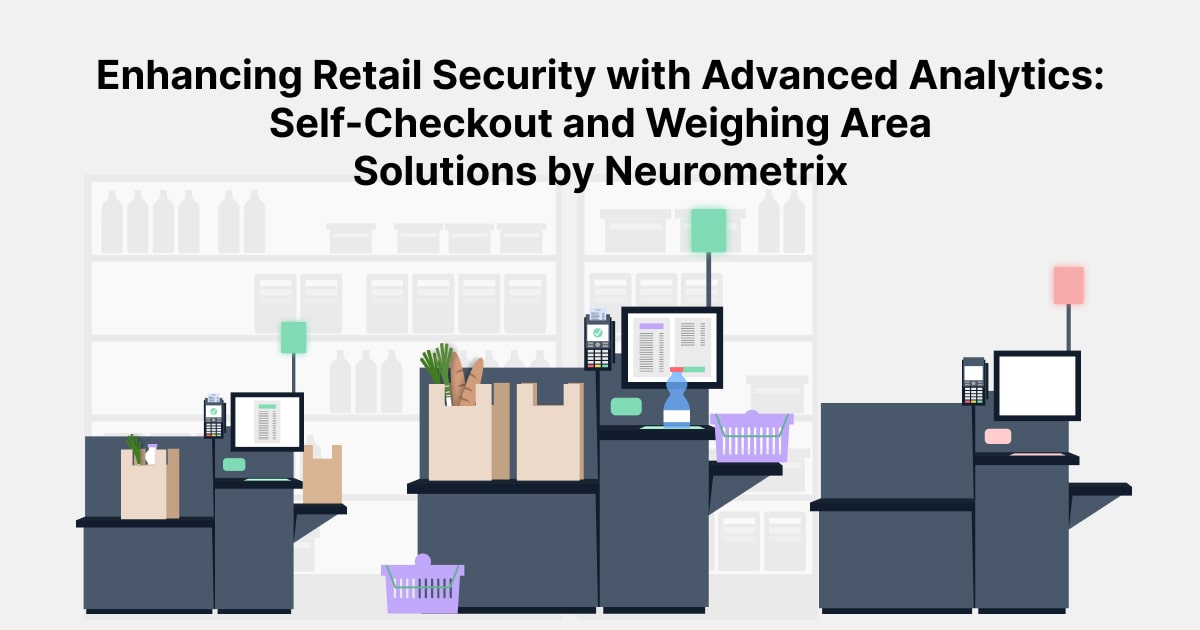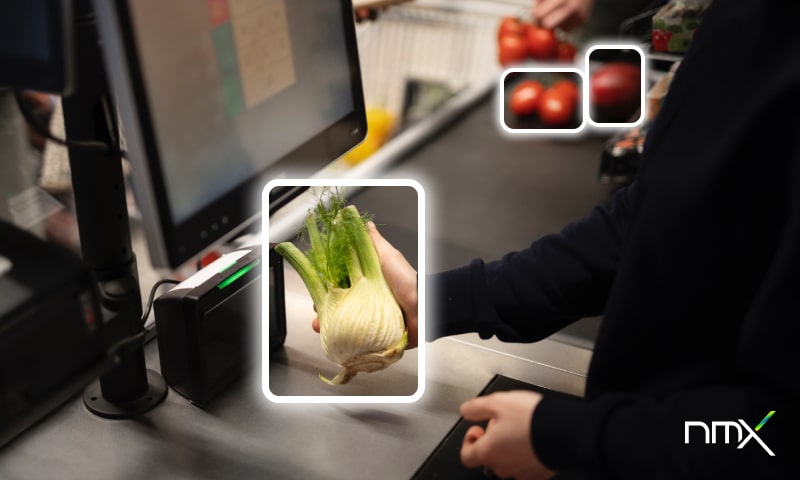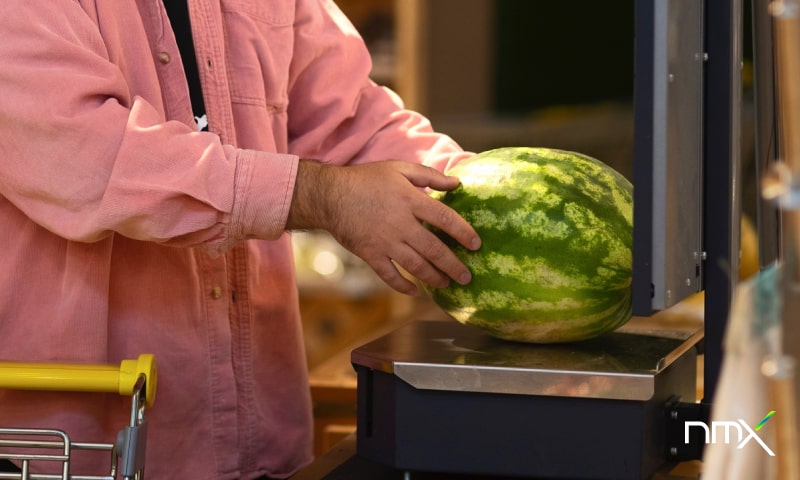Enhancing Retail Security with Advanced Analytics: Self-Checkout and Weighing Area Solutions by Neurometrix
Last updated
Last updated

Content
In our ongoing commitment to address the evolving needs of our clients, Neurometrix has developed two innovative analytics solutions aimed at enhancing retail security and reducing theft: Self-Checkout Analytics and Weighing Area Analytics. These solutions respond to a critical business challenge posed by one of our major food retail clients—minimizing theft at self-checkout stations and in the weighing areas. Here, we delve into the details of these solutions and their broader implications for the retail industry.
Content
Self-Checkout Analytics: A Two-Stage Solution
Self-checkout stations have become increasingly popular due to their convenience and efficiency, yet they also present unique challenges, particularly regarding theft. Our Self-Checkout Analytics solution is designed to identify, measure, and mitigate theft at self-checkout stations through a comprehensive two-stage approach.

Stage 1: Measurement and Analysis
At this initial stage, we perform a thorough assessment to gauge the extent and nature of theft. This process includes several critical steps:
- Data Collection: We analyze video footage from security cameras positioned at self-checkout stations and cross-reference it with transaction data. This allows us to identify discrepancies and quantify theft incidents. By examining how customers interact with the self-checkout systems and comparing this with the actual sales data, we gain insights into potential theft behaviors.
- Detailed Analysis: By examining the video footage, we identify the percentage of theft and categorize the most common types of theft, such as failure to scan items, scanning fewer items than present, and failure to scan bags. Our findings indicate that theft at self-checkout stations generally does not exceed 5%, with approximately half of these incidents involving bag-related thefts and the other half involving unscanned or under-scanned items.
- Behavioral Insights: We identify common behaviors associated with theft, such as actions taken by customers during the scanning process. This data is crucial for training our neural network to detect theft in real-time. Understanding these behaviors allows us to tailor our detection algorithms to more effectively recognize suspicious activities.
Stage 2: Implementation of Ongoing Monitoring
The next stage involves implementing a continuous monitoring system to prevent theft at self-checkout stations. This stage builds on the insights gained from the initial analysis:
- Neural Network Training: The neural network is trained on specific patterns of theft, such as customer actions at the checkout, hand movements, and item shapes. By learning these patterns, the system becomes adept at recognizing potential theft in real-time.
- Real-Time Detection: Based on this training, the system can transmit real-time data to store employees, enabling immediate responses to potential theft incidents. This real-time capability is crucial for preventing theft as it happens, rather than merely recording it for later review.
Key Metrics
The primary metrics tracked in self-checkout analytics include:
- Percentage of Theft: Identifying the proportion of transactions that involve theft. This metric provides a clear indicator of the overall effectiveness of the self-checkout system.
- Theft Statistics by Time: Analyzing the most common times for theft incidents. This information helps retailers understand when their stores are most vulnerable and adjust staffing and security measures accordingly.
- Types and Profiles of Theft: Categorizing the types of theft and profiling the behaviors of individuals involved. This deeper understanding of theft patterns allows for more targeted prevention strategies.
Benefits of Self-Checkout Analytics
By leveraging self-checkout analytics, retailers can significantly reduce the incidence of theft, optimize store security, and enhance overall operational efficiency. This not only helps in minimizing financial losses but also ensures a safer shopping environment for customers and a more secure workplace for employees. Our solution offers a proactive approach to theft prevention, utilizing advanced technologies to provide real-time insights and enabling retailers to address security challenges effectively.
Weighing Area Analytics: Preventing Theft with Advanced Object Detection
In retail, one of the highest turnover categories is fresh produce, including fruits and vegetables, making it a key area of interest for retailers. This category requires rapid turnover due to the perishable nature of the products. However, it is also one of the most vulnerable categories in terms of theft, particularly during the weighing process.

Common Issues and Solutions
One of the most common types of theft involves customers attempting to purchase expensive items (such as mangoes) but selecting a cheaper category (such as onions) during the weighing process. This misrepresentation results in significant revenue losses for retailers.
Our Approach to Weighing Area Analytics
To address this issue, we have adapted our neural network to assist retailers in this area. Our technology uses object detection to categorize all items, grouping fruits and vegetables based on their shape and segmenting them into expensive and cheap categories.
How the System Works
- Object Detection: The neural network categorizes produce items based on their visual characteristics, differentiating between various types of fruits and vegetables. This involves analyzing the shapes, sizes, and colors of items to accurately identify them.
- Price Segmentation: The system segments these items into expensive and cheap categories. By comparing the detected items with the selected category on the weighing scale, the system can identify discrepancies.
- Mismatch Detection: If the system detects a discrepancy between the item being weighed and the item being recorded at the checkout, it triggers an alert. For example, if a customer selects a cheaper item while weighing an expensive one, the system will flag this inconsistency.
- Real-Time Alerts: A signal is sent to store staff, who can then take appropriate action to resolve the issue. This immediate response capability helps prevent theft and ensures accurate billing.
Key Benefits of Weighing Area Analytics
This technology provides several key benefits for retailers:
- Theft Prevention: By accurately detecting discrepancies during the weighing process, the system helps prevent theft and reduce financial losses. Retailers can save significant amounts by ensuring that customers pay the correct price for the items they purchase.
- Enhanced Accuracy: Ensuring that customers are charged correctly for the items they purchase improves the accuracy of transactions. This not only benefits the retailer but also enhances customer trust and satisfaction.
- Operational Efficiency: Real-time alerts allow store staff to address issues promptly, maintaining the flow of operations and customer satisfaction. By quickly resolving discrepancies, stores can avoid long lines and potential disputes at the checkout.
- Data Insights: Analytics from the weighing area provide valuable data on common discrepancies and theft patterns, helping retailers refine their security and operational strategies. This data can also be used to train staff and improve overall store policies.
Broader Implications for Retail
The integration of these advanced analytics solutions has broader implications for the retail industry. As theft remains a significant challenge, particularly in high-traffic and high-turnover areas, technologies like those developed by Neurometrix offer a promising solution. By leveraging machine learning and real-time analytics, retailers can stay ahead of potential security threats and optimize their operations.
Furthermore, these technologies can be expanded beyond theft prevention. For example, the data collected can be used to optimize product placement, enhance inventory management, and improve overall customer experience. By understanding customer behaviors and patterns, retailers can make more informed decisions that benefit both their bottom line and their customers.
In conclusion, Neurometrix’ Self-Checkout and Weighing Area Analytics represent significant advancements in retail security and operational efficiency. These solutions not only address immediate concerns related to theft but also provide valuable insights that can drive broader improvements in retail management. By adopting these technologies, retailers can create a safer, more efficient, and more profitable shopping environment.

